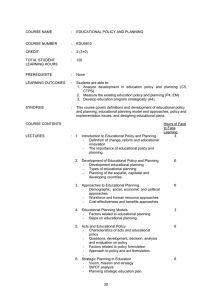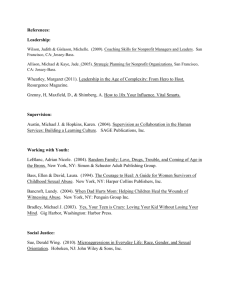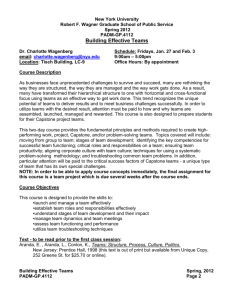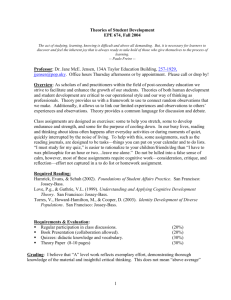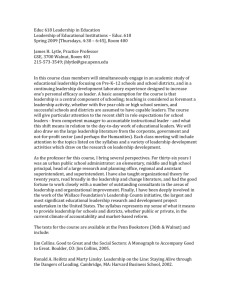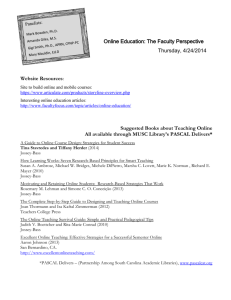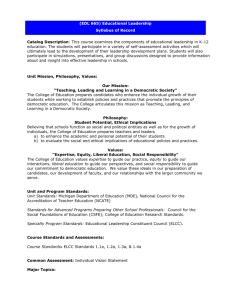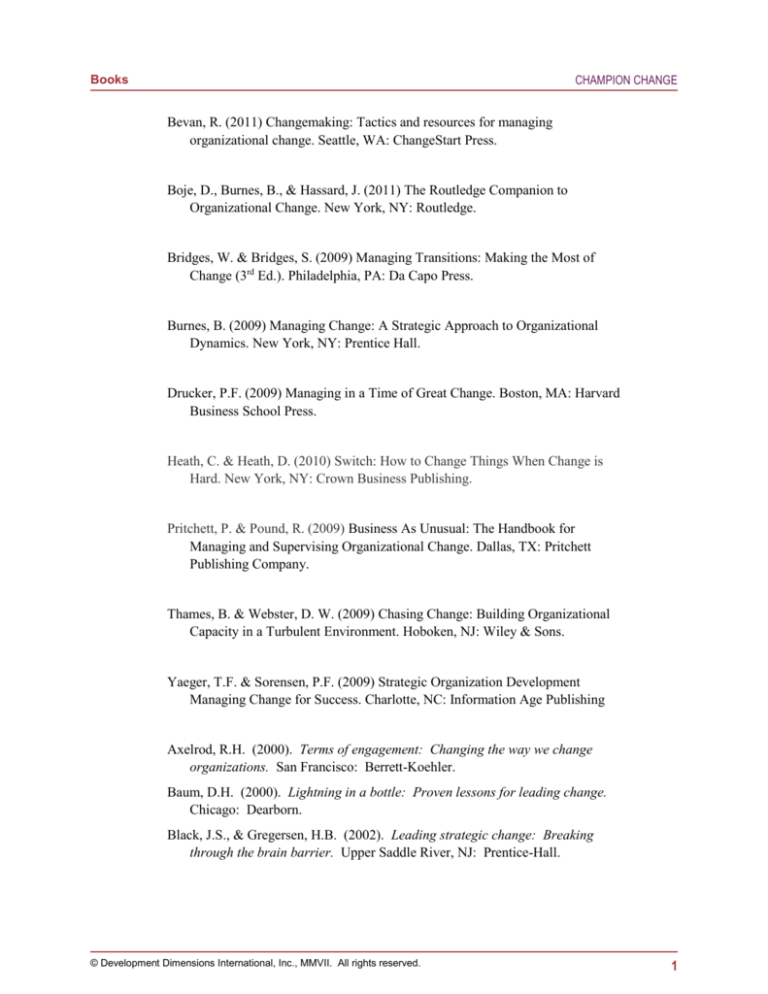
CHAMPION CHANGE
Books
Bevan, R. (2011) Changemaking: Tactics and resources for managing
organizational change. Seattle, WA: ChangeStart Press.
Boje, D., Burnes, B., & Hassard, J. (2011) The Routledge Companion to
Organizational Change. New York, NY: Routledge.
Bridges, W. & Bridges, S. (2009) Managing Transitions: Making the Most of
Change (3rd Ed.). Philadelphia, PA: Da Capo Press.
Burnes, B. (2009) Managing Change: A Strategic Approach to Organizational
Dynamics. New York, NY: Prentice Hall.
Drucker, P.F. (2009) Managing in a Time of Great Change. Boston, MA: Harvard
Business School Press.
Heath, C. & Heath, D. (2010) Switch: How to Change Things When Change is
Hard. New York, NY: Crown Business Publishing.
Pritchett, P. & Pound, R. (2009) Business As Unusual: The Handbook for
Managing and Supervising Organizational Change. Dallas, TX: Pritchett
Publishing Company.
Thames, B. & Webster, D. W. (2009) Chasing Change: Building Organizational
Capacity in a Turbulent Environment. Hoboken, NJ: Wiley & Sons.
Yaeger, T.F. & Sorensen, P.F. (2009) Strategic Organization Development
Managing Change for Success. Charlotte, NC: Information Age Publishing
Axelrod, R.H. (2000). Terms of engagement: Changing the way we change
organizations. San Francisco: Berrett-Koehler.
Baum, D.H. (2000). Lightning in a bottle: Proven lessons for leading change.
Chicago: Dearborn.
Black, J.S., & Gregersen, H.B. (2002). Leading strategic change: Breaking
through the brain barrier. Upper Saddle River, NJ: Prentice-Hall.
© Development Dimensions International, Inc., MMVII. All rights reserved.
1
CHAMPION CHANGE
Books
Conger, J.A., Spreitzer, G.M., & Lawler, E.E. (Eds.). (1999). The leader’s change
handbook: An essential guide to setting direction and taking action. San
Francisco: Jossey-Bass.
Fogg, C.D. (1999). Implementing your strategic plan: How to turn “intent” into
effective action for sustainable change. New York: AMACOM.
Gryskiewicz, S.S. (1999). Positive turbulence: Developing climates for creativity,
innovation, and renewal. San Francisco: Jossey-Bass.
Harper, S.C. (2001). The forward-focused organization: Visionary thinking and
breakthrough leadership to create your company’s future. New York:
AMACOM.
Harvard Business Review. (1998). Harvard Business Review on change. Boston:
Harvard Business School Press.
Johnston, R., & Hesselbein, F. (Eds.). (2002). On leading change: A leader to
leader guide. San Francisco: Jossey-Bass.
Kotter, J.P., & Cohen, D.S. (2002). The heart of change: Real-life stories of how
people change their organizations. Boston: Harvard Business School Press.
Laszlo, C., & Laugel, J. (2000). Large-scale organizational change: An
executive’s guide. Boston: Butterworth-Heinemann.
Nadler, D.A. (1998). Champions of change: How CEOs and their companies are
mastering the skills of radical change. San Francisco: Jossey-Bass.
Pendlebury, J., Meston, F., & Grouard, B. (1998). The ten keys to successful
change management. New York: Wiley.
Rogers, R.W., Hayden, J.W., & Ferketish, B.J. (with Matzen, R.). (1997).
Organizational change that works: How to merge culture and business
strategies for maximum results. Pittsburgh, PA: DDI Press.
Ulrich, D., Kerr,S., & Ashkenas, R. (2002). The GE work-out: How to implement
GE’s revolutionary method for busting bureaucracy and attacking
organizational problems—fast! New York: McGraw-Hill.
No Excuses
Jossey-Bass A Wiley Brand
Jennifer Robin and Michael Burchell
In this follow-up guide to The Great Workplace, experts from Great Place to
Work® Institute, Inc. reveal the most common excuses managers use for why
they can't create a great workplace. Authors Jennifer Robin and Michael
Burchell poke holes in every single excuse. Whether the reasons involve the
organization's leadership, employees, environment, or any other factor, the
authors explain that if managers lead people properly, they can create a great
© Development Dimensions International, Inc., MMVII. All rights reserved.
2
CHAMPION CHANGE
Books
workplace. The authors explore how managers can interrupt their own negative
thought patterns and instead create lasting change, and they describe how great
workplaces have surmounted very real difficulties with aplomb.
•
Includes case studies, stories, tips, and tools for managers who want to
transform their organizations
•
From the experts at the Great Place to Work, a global research, consulting, and
training firm that operates in nearly 50 countries
•
Proves that any and every organization can change for the better when
managers have the right tools and mindset
Creating a place where people want to work and want to succeed is the primary key
to success for every manager. No Excuses shows that managers in any
organization can transform their workplace—if they'll only get out of their own
way first.
© Development Dimensions International, Inc., MMVII. All rights reserved.
3

